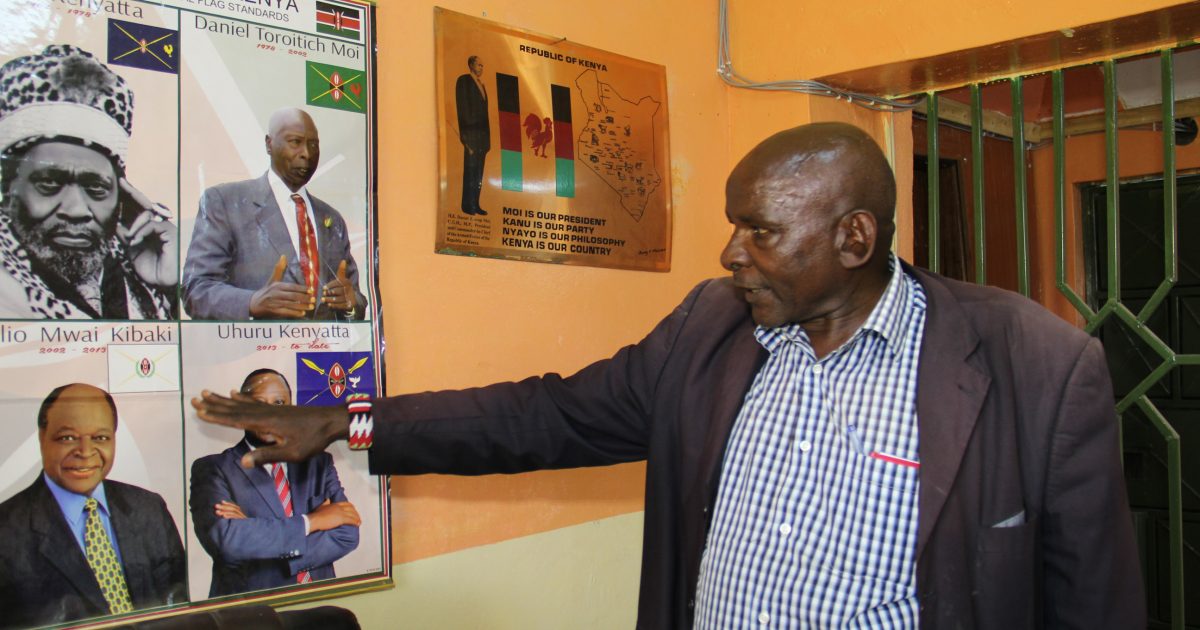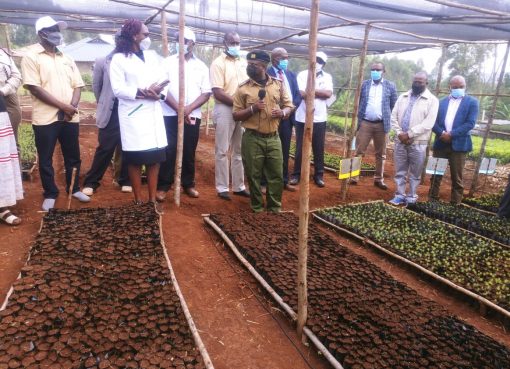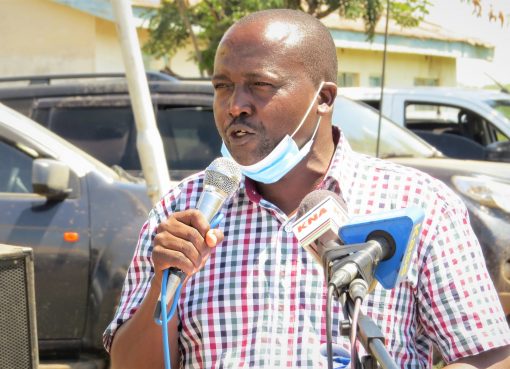The offensive was on. The government’s decision to take battle to the then unofficial opposition had been signaled loud and clear at a series of high-powered political rallies held in Rift Valley.
The authorities were clearly in a bind what to do with the threat posed by the agitation for political reforms then sustained by the nebulous Forum Of Restoration of Democracy (FORD) which had been launched by Jaramogi Oginga, Martin Shikuku, George Nthenge and Phillip Gachoka in August 1991.
To most Kenya African National Union (KANU) politicians, the end had come. That was the mood everywhere – in hotels, bars and even in churches. Everyone was talking of the end of KANU and the feeling of defeat was palpable in the independence party.
Three months earlier Peter Nduguya Ole Osono, who died at the Nairobi Hospital yesterday morning, had retired from the military and actively plunged himself headlong into politics. His sights were trained on Elementaita civic seat which he hoped to clinch on a KANU ticket in the impending December 1992 elections.
In an interview with Kenya News Agency in February last year following the death of former President Daniel Arap Moi, the late Ole Osono reminisced how all the odds were stacked against KANU as the party’s influential politicians were abandoning it like a house on fire.
“They were joining the Opposition bandwagon in droves in an attempt to unseat Moi from his 14-year presidency,” explained the man who would later have an eventful and turbulent tenure as a nominated councillor and Nakuru KANU Branch Chairman.
Determined to deliver to KANU the Elementaita Civic Ward, Ole Sono overzealously mobilized women and youth to support the ruling party in a manner that had never been done in Naivasha area attracting attention of influential politicians and highly placed civil servants.
“Our party was literally dead before. Members were demoralized. There was no way it was going to beat the Opposition. We held several meetings with influential KANU leaders at the Nakuru District office and concluded that we had to concentrate our campaigns at the grassroots,” stated the former civic leader.
Soon President Moi noticed the military man turned politician’s mobilization skills and oratory prowess virtues that gave him unfettered access to the State House, a move that brought him into conflict with some of his long-time allies.
Though he was resoundingly beaten in the 1992 General Election by a Ford Asili Candidate, Moi gave Ole Osono a new political lifeline by nominating him to the defunct County Council of Nakuru, kicking off his long albeit controversy ridden political career.
Having carved a niche for himself, the nominated civic man now enjoyed unfettered access to President Moi’s Kabarak home whenever the Head of State was in Nakuru and had the ear of top public servants including the then Rift Valley Provincial Commissioner the late Ishmael Juma Chelang’a.
Though he had a penchant for igniting political storms, his mobilization skills saw President Moi gift him with a brand new Daihatsu whose registration number was KAZ 474Z.
With a fire in the belly and a quick punch, Ole Osono soon found himself at the centre of perennial leadership wrangles that rocked Nakuru KANU branch offices.
In his unconcealed and sometimes vile quest to dethrone sitting chairmen, Ole Osono and his allies on a number of occurrences ran afoul with supporters of former long serving Shabab Ward Councilor Geoffrey Asanyo, former Municipal Council Deputy Mayor Raphael Korir and the current Bahati Member of Parliament, Onesmus Kimani Ngunjiri who at various times occupied the then powerful but tumultuous KANU branch Chairmanship.
So daring was Ole Osono that on two occasions his name featured prominently in branch leadership takeover bid characterized by violent and bloody confrontations bringing him into the cross hairs of influential former Nominated Member of Parliament Wilson Leitich of the cut-a-finger fame, a powerful former nominated councillor William Lasoi who doubled up as President Moi’s farm manager.
One afternoon when violent confrontations had become a permanent fixture at the branch President Moi’s motorcade stopped outside the Nakuru KANU Office and through loudspeakers mounted atop cars he reprimanded the branch leadership for practicing immature and shameful politics.
The crowd that had gathered cheered wildly as the then President tore into the top officials and announced that he had suspended all the warring factions from leadership.
Ole Osono was not done yet. He did little to conceal the fact that he still coveted the branch chairmanship.
In the run up to 1997 General Elections Moi appointed Ngunjiri to the chairmanship with Ole Osono as his vice, a political calculation that many observers thought would quench the embers of fire that had been stoked for years at the branch.
Months after the general election what started as mere differences of opinion between Ngunjiri and his Vice chairman soon snowballed into a full blown political war that strained the relationship between the branch’s top two KANU leaders.
With Ole Osono having been nominated yet again to the County Council and Ngunjiri suffering a humiliating defeat in the Bahati Parliamentary elections, landing a distant fourth position, the Vice Chairman’s axis started openly accusing the chairman of having ruined KANU’s chances of winning parliamentary seats in Nakuru.
For five years, the Chairman and his vice never engaged directly in public even as their allies traded barbs, a state of affairs that confirmed all was not well at the branch offices.
With Ngunjiri having lost his second bid for Bahati parliamentary seat in 2002 when KANU’s presidential flag bearer Uhuru Kenyatta was whitewashed by National Alliance Rainbow Coalition’s Mwai Kibaki, Ole Osono decided it was the time he took off the gloves, giving the clearest indication that he had intentions of wrestling leadership from his boss.
Having not been nominated to the County Council after the 2002 polls, Ole Osono needed the perch to remain politically relevant and maintain his connections with wealthy and powerful KANU bigwigs strewn across Nakuru.
Mr Ngunjiri’s relationship with Ole Osono got to a point of no return when the latter started presiding over meetings where speakers at the events publicly called for the chairman’s resignation ‘for failing to effectively market’ the now defeated KANU.
The two leaders made up their minds to go their separate ways when Ole Osono backed by a group of youth wingers staged a violent takeover and barricaded the chairman’s office, before declaring himself as the new branch boss.
Finally the mulish political operative’s schemes paid off as he went on to have one of the longest stints as branch chairman serving between 2002 and 2008. His perch at the helm was curtailed in 2009 when KANU headquarters named former Nakuru Town Member of Parliament David Njuki Manyara pending elections as caretaker chairman.
The elections were never held for undisclosed reasons effectively denting Ole Osono’s come back bids.
Back at his Elementaita backyard he fashioned himself as a champion for the masses filing litigations before law courts to address matters that affected the locals.
He founded the Oljorai Land Buying Company and moved to the Court of Appeal after the Environment and Lands court in Nakuru declared more than 3,000 titles relating to 8,000-acre land in Kiambogo null and void.
Though he loved courting media attention, his relationship with newsmen was oxymoronic.
In May 2015, he was arrested and disarmed after allegedly opening fire at a group of journalists who were covering a protest over a purported illegal encroachment of a public road in Oljorai.
He was subsequently arraigned before court to face indictments of incitement to violence, disobedience of the law and almost bringing death to two journalists.
Like the proverbial cat with nine lives, Ole Osono was declared innocent February 27, 2017 after Naivasha Chief Magistrate Peter Gesora threw out all the four charges he was facing.
Gesora noted in his judgment that the prosecution failed to prove that the accused incited his workers to cause violence and that no one was injured in the process. The magistrate also directed the police to return his pistol and firearm certificates they confiscated from the politician.
In a later interview with a Television Station Ole Osono bluntly denied shooting at journalists insisting that “most of them are my friends. They have covered very many of my functions.
At the time of his death at 79 years, he was the Nakuru Branch Orange Democratic Party of Kenya chairman.
By Anne Mwale





